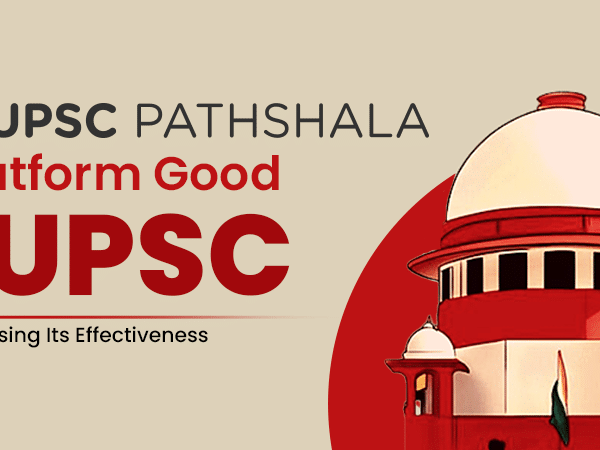In the challenging landscape of UPSC Mains, where every word holds weight, the role of handwriting cannot be underestimated. Handwriting is more than a medium of expression; it is a tool that can leave a lasting impression on examiners. This exploration “Which handwriting is best for UPSC mains? Tips and guidelines” delves into the characteristics of ideal handwriting, offers tips for improvement, and navigates the delicate balance between content and presentation in UPSC Mains.
Which Handwriting is Best for UPSC Mains!!
Characteristics of Ideal Handwriting for UPSC Mains
- Legibility as a priority: Legible handwriting is paramount in UPSC Mains. Examiners must be able to effortlessly read and comprehend the content. Aspirants should prioritize clarity to ensure that their answers are not hindered by illegible script.
- Consistency in style and size: A consistent handwriting style and size contribute to a visually appealing answer sheet. Abrupt changes in style or size can distract examiners and impact the overall impression of the answers.
- Neatness and clarity in presentation: Neatness goes hand in hand with legibility. A well-organized answer sheet with clear headings, subheadings, and properly demarcated paragraphs enhances the overall presentation, making it easier for examiners to follow the thought process.
Tips for Improving Handwriting for UPSC Mains
- Practice regularly with focus on letter formation: Regular practice is the key to improving handwriting. Aspirants should dedicate time to focused practice, paying attention to letter formation, spacing, and overall consistency. Practice sessions can include rewriting passages from newspapers, books, or previous answer sheets.
- Develop a comfortable writing grip: The writing grip plays a crucial role in achieving a fluid and controlled handwriting style. Aspirants should experiment with different grips to find one that is comfortable and allows for a consistent flow of writing without causing strain.
- Utilize practice sheets and writing drills: Practice sheets and writing drills specifically designed for UPSC Mains can be valuable tools. These resources help aspirants target specific aspects of their handwriting that require improvement, ensuring a systematic and structured approach to practice.
Common Mistakes to Avoid in UPSC Mains Handwriting
- Overemphasis on embellishments and flourishes: While a certain level of embellishment can enhance the visual appeal, overdoing it can detract from the content. Aspirants should strike a balance, ensuring that clarity and legibility remain the primary focus.
- Rushed and messy writing due to time constraints: Time constraints can lead to rushed and messy writing. Aspirants should manage their time effectively during the exam, allocating sufficient time for each answer to maintain a consistent and legible handwriting style.
- Neglecting to review and edit written answers: After completing an answer, aspirants should allocate a few minutes to review and edit their written answers. This allows them to identify and rectify any handwriting issues, ensuring a polished and well-presented response.
The Psychological Impact of Handwriting in UPSC Exams
- Creating a positive first impression: Handwriting is the first impression examiners have of an aspirant’s response. A positive first impression sets the tone for the evaluation and can influence the examiner’s perception of the candidate.
- Enhancing readability for examiners: Neat and legible handwriting enhances readability, making it easier for examiners to navigate through the answer sheet. This, in turn, can positively influence the examiner’s understanding of the content.
- Boosting confidence and self-assurance: A well-presented answer sheet can boost the confidence and self-assurance of aspirants. Confidence reflects in the way answers are articulated, contributing to a positive overall impression.
Also Read: Highest Post in UPSC: Find Out the Top Ranks in IAS, IPS and IFS
Other Considerations: Which Handwriting is Best for UPSC Mains!!
Handwriting Styles and Personal Preferences
- Cursive vs. print handwriting: The choice between cursive and print handwriting is a personal one. Aspirants should opt for the style that aligns with their comfort and legibility. Both styles can be effective if executed consistently and legibly.
- Finding a balance between speed and neatness: Balancing speed and neatness is crucial, especially in a time-bound exam. Aspirants should develop a writing pace that allows for both efficiency and legibility, avoiding the pitfalls of hurried and illegible handwriting.
- Choosing a style that aligns with personal comfort: Handwriting is a personal expression. Aspirants should choose a style that aligns with their comfort and natural writing tendencies. This choice contributes to a more authentic and sustainable handwriting style.
Addressing Handwriting Challenges for UPSC Aspirants
- Seeking professional guidance for improvement: Aspirants facing persistent handwriting challenges can seek professional guidance. Handwriting improvement classes or consultations with experts can provide personalized strategies for enhancement.
- Using technology for practice and assessment: Digital tools can aid in handwriting practice and assessment. Aspirants can use tablets or stylus devices to simulate exam conditions and receive instant feedback on their handwriting, allowing for continuous improvement.
- Incorporating handwriting practice into daily study routines: Handwriting practice should be an integral part of daily study routines. Aspirants can set aside dedicated time for practice, ensuring consistent improvement over time.
The Intersection of Content and Presentation in UPSC Mains
- Content remains the primary focus: While handwriting is a crucial aspect of presentation, content remains the primary focus in UPSC Mains. Aspirants should prioritize thorough content coverage, articulating their ideas and arguments with clarity and depth.
- Presentation as a supplementary aspect of evaluation: Presentation, including handwriting, serves as a supplementary aspect of evaluation. A well-presented answer sheet enhances the examiner’s experience but should not overshadow the depth and substance of the content.
- Achieving a harmonious balance between content and handwriting: The ideal approach is to achieve a harmonious balance between content and handwriting. Aspirants should view handwriting as a tool to convey their ideas effectively, complementing the substance of their responses.
Also Read: Essay Question Paper – UPSC Mains 2023
Conclusion
In the competitive realm of UPSC Mains, where every detail matters, handwriting emerges as a significant factor in leaving a lasting impression on examiners. Aspirants are encouraged to prioritize legibility, consistency, and neatness, recognizing the psychological impact of handwriting on the overall evaluation. Balancing the art of handwriting with the science of content ensures a comprehensive and impactful presentation in UPSC Mains. Know more – UPSC Pathshala
FAQs
Q1: Can I use a mix of cursive and print handwriting in UPSC Mains?
A: Yes, aspirants can use a mix of cursive and print handwriting based on personal comfort. The key is to maintain consistency and legibility throughout the answer sheet.
Q2: How much time should I dedicate to handwriting practice daily?
A: As a general guideline, dedicating 15-30 minutes daily to focused handwriting practice can yield significant improvement over time. The goal is to develop a consistent and legible handwriting style.
Q3: Is it acceptable to use bullet points and diagrams in UPSC Mains answers for better presentation?
A: Yes, using bullet points and diagrams can enhance the presentation of answers. However, aspirants should ensure that these elements complement the written content and do not compromise clarity.
Q4: What should I do if I encounter handwriting challenges despite regular practice?
A: If handwriting challenges persist, consider seeking professional guidance for personalized strategies. Handwriting improvement classes or consultations with experts can provide tailored solutions.
Q5: How can I manage time effectively to review and edit my answers for handwriting issues during the exam?
A: Allocate a few minutes at the end of each answer to review and edit for handwriting issues. Prioritize reviewing clarity, consistency, and overall presentation to ensure a polished response.
Also Read: Srushti Jayant Deshmukh Biography: Wiki, Age, Current Posting, Marksheet & More





